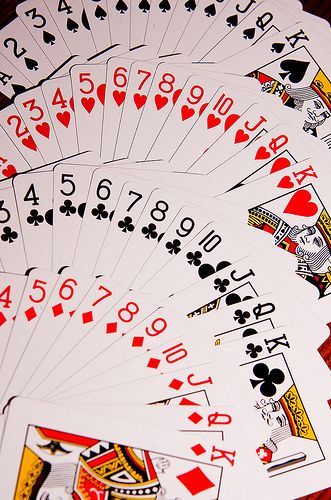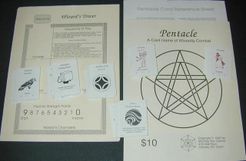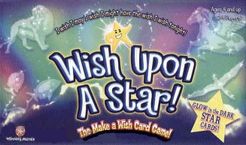|
Advertisement
|
Skitgubbe

DescriptionThis popular Swedish game for three players is also known as Mjölnarmatte or Mas and in Norwegian it is called Mattis. Players, cards and deal Deal and play are clockwise. Each player receives 3 cards. The rest of the cards are laid face down in a pile on the table (stock). Object of the game Play in the first phase If the two cards played to a trick are equal it is called a stunsa (bounce); the cards are left on the table, the two players each draw a card from the stock and the same player leads again. This continues until one of the players wins the trick and takes all the cards played, including the cards from the tied tricks. In this first phase, the second player to a trick is under no obligation to try to beat the card led. If a low card is led the second player may wish to play lower and give the trick to the leader, for it is important to collect strong cards in the first phase of the game, so gain an advantage in the second phase. Throughout the first phase, when it is your turn to play and there is still more than one card in the stock, instead of playing from your hand you may turn up the top card of the stock. If you turn a card from the stock you must play it - you may not put it in your hand. The last card from the stock determines the trump suit for the second phase. The player who has to draw this card takes it but does not add it to his hand but keeps it face down until the first phase is over. When the stock is exhausted, the play continues as long as possible with the cards players have in their hands. If some players have cards left in hand at the end of the first phase they keep them for the second phase. If the final trick of the first phase is a bounce, the players take back the cards they played to it and keep them for the second phase. Play in the second phase Now you must either beat the previous card played or pick it up. A card may be beaten by a higher card of the same suit, and a non-trump may be beaten by any trump. It is never lawful to duck. If you cannot or do not wish to beat the card in front of you, you must take it up into your hand, and it is then the next player's turn to lead to a new trick. If there is more than one card lying on the table and you cannot beat the last card played, it is only this last card which you must take up into your hand. It is then the next player's turn to beat the card which was underneath it. A trick is complete when either: the number of cards in it is equal to the number of players who were in the game when the trick began, or Note that as players run out of cards, the number of cards in each trick reduces. If there are three players, one of whom runs out of cards during a trick, that trick still requires three cards to be completed (or all its cards to be picked up), but the next trick will require only two cards. For example suppose there are 3 players: A, B, C. A leads his last card, B beats it, C picks B's card up, B beats A's card again, and now C beats B's card. The trick is now over, and C leads to the next trick. As there are now only two players, the new trick will have only two cards. Another example with three players: A leads; B beats with his last card, C picks this card up, and A picks up the card he led. It is now B's lead and the next trick will be complete with two cards. A player who gets rid of all his cards can draw a sigh of relief, for he is not the loser. The loser is the player who is left with the last card in his hand, and is called "Skitgubbe" (or "Mas" or "Mattis"). Skitgubbe means "dirty old man" (in the sense of unwashed, rather than obscence); Mas and Mattis mean fool." - Description and rules credited to John McLeod from his excellent website here: Game DiscussionsAdd CommentYou need to be logged in to comment. Insert Bullet List Please enter at least one item. Item: Item: Item: Item: Item: Insert Numeric List Please enter at least one item. Item: Item: Item: Item: Item: Insert Link Please enter the link of the website Optionally you can add display text Insert Email Please enter the email address Optionally add any display text Insert Image Please enter the link of the image Insert YouTube Video Please enter the link of the video MarketplaceNo listings at the moment. Do you own this game? Click here to list it for sale.
|
Best Sellers
Board Games
|
||||
Latest Searches: ghost castle | pacardy | so | Black butler monopoly | warhammer conquest | scattergories answer pad | Chalmetteopoly | Teenage Mutant Ninja Turtles Retro Monopoly | globetrotter | Danville Opoly | age+of+mythology | betry | Curse of the temple | Bubble | beyblade+burst+swich+strike | O. J. Opoly | Morristown monopoly | brake | queue | Hunted | empire of the sun | Barstow opoly | the logo game | jack ass | Messy | middara | toilet | Monopoly Coast Guard | Cocoa beach monopoly | gi
All Rights Reserved











Comments (0)